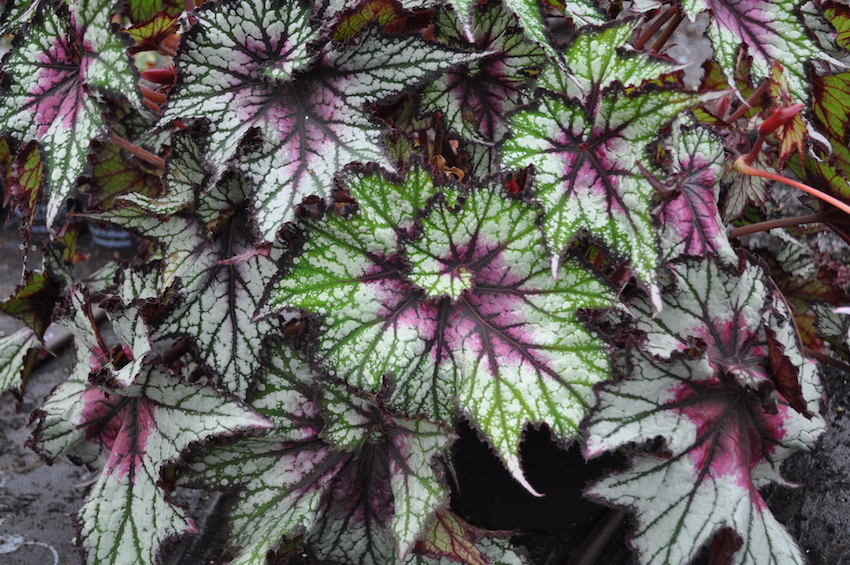
Innovation Over Tradition
The reverse of urban sprawl produces new challenges to the garden center retailer. This reversal also produces new opportunities to those with the vision to provide big color in small spaces.
Throughout much of the nation the dream of a white picket fence property has been replaced with a modern railing clinging onto a loft balcony housing a view of more bricks than leaves.
The generational shift to a new vision of homesteading may also bring a more consistent sales opportunity with only a small adjustment to product procurement. There is no doubt Sunday barbecues are relinquishing to Uber Eats, Saturday grocery runs to Amazon same-day delivery and Friday night parties to a left or right swipe. I would hesitate to call this a process of instant gratification, but rather instant result.
We need to achieve the mindset within the horticultural community that our consumers are increasingly less willing to add an additional step to achieve their desired results. They are looking less and less to make their own combination from six packs or 4-inch containers. It’s a “one-n-done” philosophy that we should embrace.
Our largest disposable income market is the 20 and 30 somethings, but they are also a tough sell. We must grab their attention, visually attract them to a living product and have simple sales processes without a plethora of add-ons required for success.
Bring In Texture
We have predominantly worked within the notion that the plant itself is making the sale alone. Our newly emerging clientele see the complete package, plant and container, as equal parts. These containers will, more often than not, go right to the balcony, countertop or front porch without additional inputs or purchaser processes.
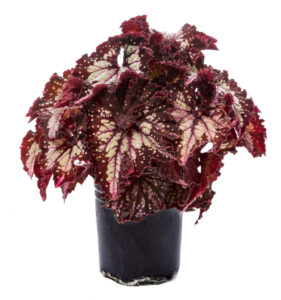
One of the hottest retail trends exists in new Begonia Rex breeding — shade loving plants known for explosive leaf design on heavily textured plants. The Shadow King series of compact Rex begonias hold beautifully in small ceramic pots or decorative low bowls.
Take the upscale opportunity when your supplier delivers in 4-inch pots to repot three plants into a monochromatic bowl. This will accentuate the brilliant leaf and help the consumer envision its placement within their own décor.
The Begonia Rex Dibs series delivers all the same colors as the Shadow Kings, but on a large, bold plant chassis — ideal structure to make the impact by the front door or back balcony.
Both series are light feeders and, because their predominant impact is foliage, they require near zero maintenance.
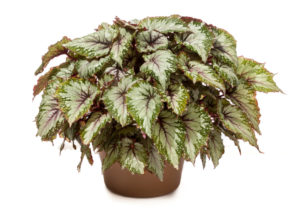
Frosty ferns, Scottish moss, dracaena, pothos and the ever- expanding succulent offerings, all allow retailer packaging per the regional tastes.
Perhaps one of the biggest opportunities to cash in on texture presents itself during the holiday window. Poinsettia and cyclamen sales are consistent, but not growing. Strong market competition has driven us to a sales price point that marginalizes the crop so much it becomes questionable to justify.
The above-mentioned genus can be easily out tted as a holiday offering. Red Twig Dogwood stems added to a 10-inch Rex begonia pot conveys the holiday and can still have a place in the home come Jan. 1. A red tip echeveria in a sleek black pot helps make a perfect table setting.
Explore these notions in an easy-to-grasp display in your retail environment. Promote your plant choices with signage based on the minimization of care and the longevity of the plant.
I have an agave in my of ce that last received water under a different president. In short, promote not only the style, but that the plant does not take offense to their active indifference.
Fall Away From the Norm
We are accustomed to associating the fall season with mums, pansies and kale. All are excellent options to attract off-season sales, but their colors are standard, and, in the case of mums, their shelf life is predetermined. We remain at the mercy of the weather.
Often the fall has been increasingly warm which wreaks havoc on fall crops. Warm weather will cause the mum to blow its blooms and fade its colors.
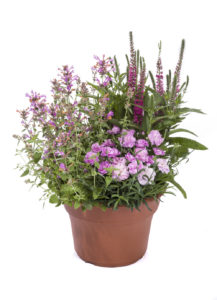
More and more wholesalers are promoting perennial combinations for a variety of reasons. Traditional perennial selections are photoperiodic and require a set number of day-length hours to bloom. They also will bloom for a set period until their reproductive cycle has ended and will either die back or return to a not-so-easy-to-sell green vegetative period.
Over the last few years the breeding pipeline on perennials has advanced to a level that removes the historical requirements.
New varieties have no sensitivity to day-length and will bloom as long as the temperatures are within reasonable range. They also do not require the cool treatment (vernalization) that initiates the reproductive response. This is a key trait, meaning the grower can bring in fresh perennial crops year-round, and the retailer can sell items grown for a specific time period and not “leftovers.”
This breeding is not a small group of plants either. Many spring top hits fall into this category such as leucanthemum ‘White Mountain’, salvia numerosa ‘Swifty’, monardella ‘Marion Sampson’, coreopsis ‘Golden Sphere’ and veronica ‘Vernique’ that are just a few of the perennials that break the historic mold.
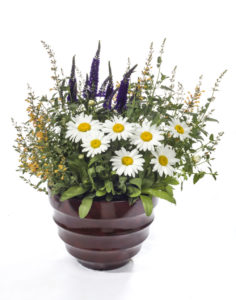
Much like annual combinations, perennial combinations made with day-length neutral genetics will bloom all season. The Green Fuse Botanicals Perennial Compatibles are predetermined combinations for the grower, that not only behave well together during the growing period but also play nicely for the end consumer.
These Perennial Compatibles give assurances that the aggression and plant requirements are already evenly matched.
The fall market is especially attractive as these perennial combinations will tolerate cold as well as heat. Using the same idea previously mentioned, they can be made patio ready with attractive ceramic or other premium containers.
Perennials have a lower feed requirement than vegetative annuals, increasing the consumer success after purchase.
A nice retail price point can be achieved, especially compared to the commodity crop of a mum.
Educating the consumer on perennial combinations is also key. For those in the suburbs, the plants can be broken apart and planted into the landscape at the end of the season. This notion delivers a “two-fer” to the consumer, and drives a price point for the retailer.
I see in even my own neighborhood that gardens have shrunk. The baby boomer generation is downsizing, and the Gen X and millennials are moving in.
While my house tends to look like a clown convention exploded due to the number of planted owers, this is far from the norm.
Container gardening is an older notion, but is still a quickly growing one and the trend is only gaining momentum. There are a multitude of options to keep the mixes from getting stale.
We have a new generation of consumers, and like all other products from cars to televisions to vacations, they are not looking for what their parents had. Provide focus on innovation over tradition.






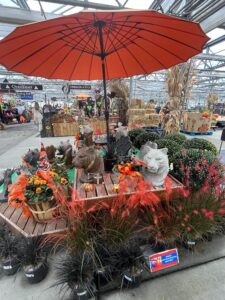
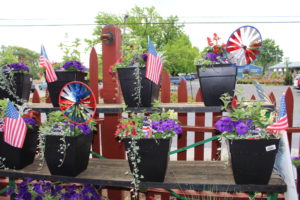
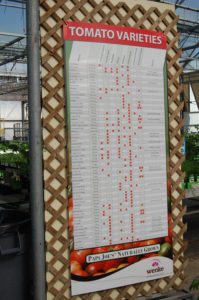
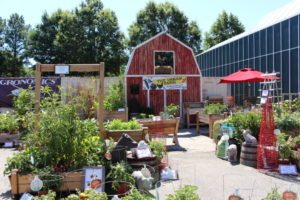
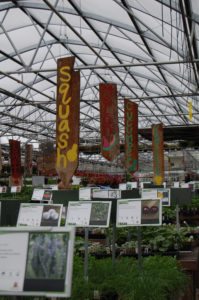



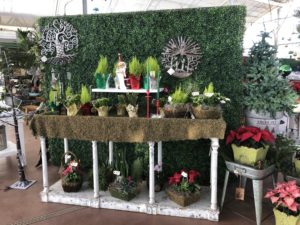
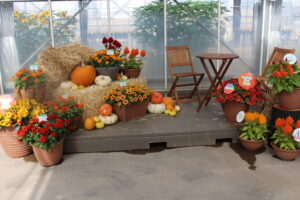
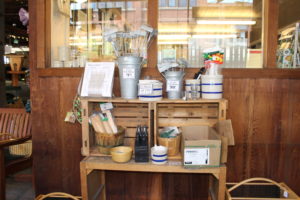
 Videos
Videos





